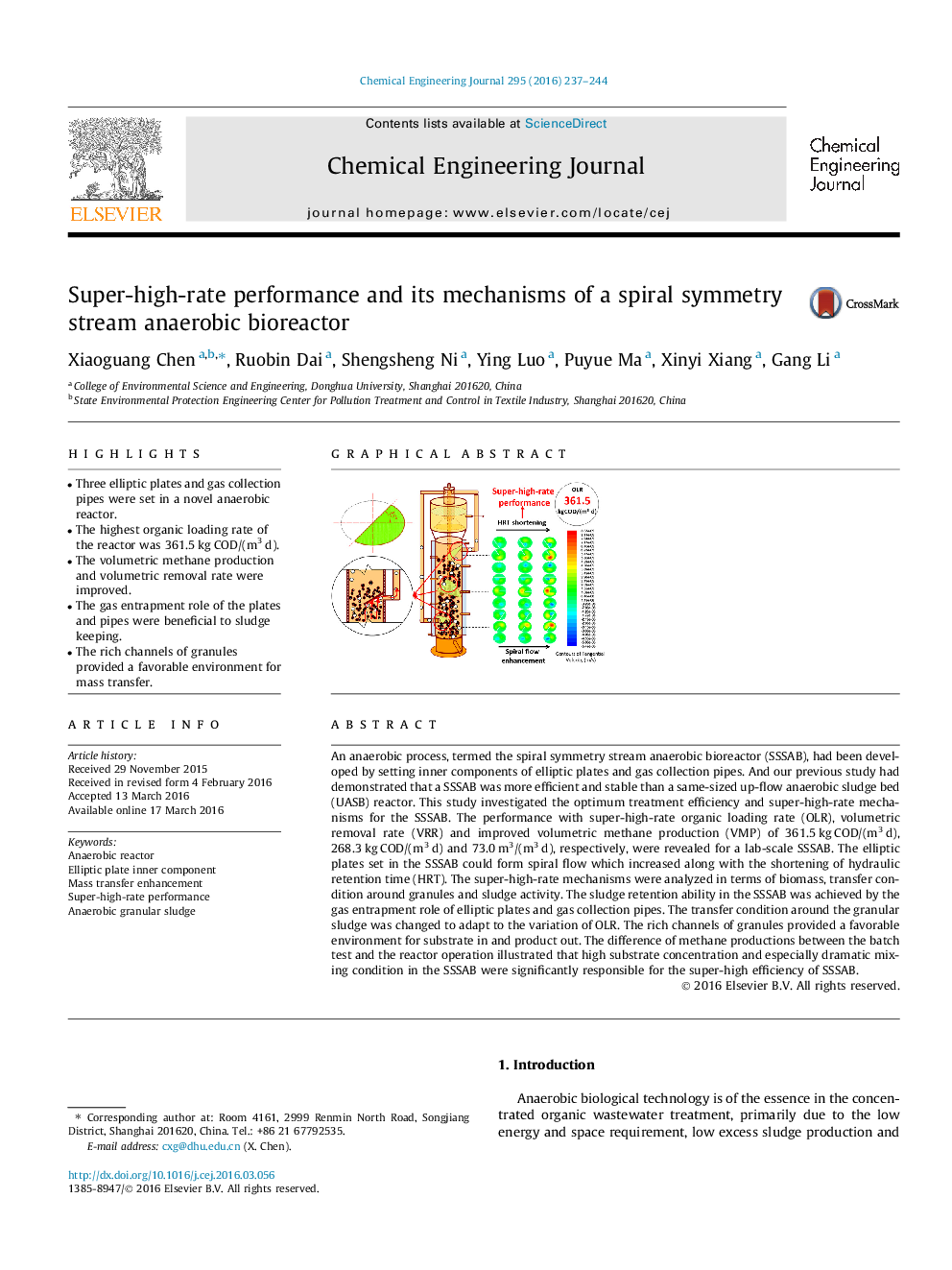| کد مقاله | کد نشریه | سال انتشار | مقاله انگلیسی | نسخه تمام متن |
|---|---|---|---|---|
| 145636 | 456345 | 2016 | 8 صفحه PDF | دانلود رایگان |
• Three elliptic plates and gas collection pipes were set in a novel anaerobic reactor.
• The highest organic loading rate of the reactor was 361.5 kg COD/(m3 d).
• The volumetric methane production and volumetric removal rate were improved.
• The gas entrapment role of the plates and pipes were beneficial to sludge keeping.
• The rich channels of granules provided a favorable environment for mass transfer.
An anaerobic process, termed the spiral symmetry stream anaerobic bioreactor (SSSAB), had been developed by setting inner components of elliptic plates and gas collection pipes. And our previous study had demonstrated that a SSSAB was more efficient and stable than a same-sized up-flow anaerobic sludge bed (UASB) reactor. This study investigated the optimum treatment efficiency and super-high-rate mechanisms for the SSSAB. The performance with super-high-rate organic loading rate (OLR), volumetric removal rate (VRR) and improved volumetric methane production (VMP) of 361.5 kg COD/(m3 d), 268.3 kg COD/(m3 d) and 73.0 m3/(m3 d), respectively, were revealed for a lab-scale SSSAB. The elliptic plates set in the SSSAB could form spiral flow which increased along with the shortening of hydraulic retention time (HRT). The super-high-rate mechanisms were analyzed in terms of biomass, transfer condition around granules and sludge activity. The sludge retention ability in the SSSAB was achieved by the gas entrapment role of elliptic plates and gas collection pipes. The transfer condition around the granular sludge was changed to adapt to the variation of OLR. The rich channels of granules provided a favorable environment for substrate in and product out. The difference of methane productions between the batch test and the reactor operation illustrated that high substrate concentration and especially dramatic mixing condition in the SSSAB were significantly responsible for the super-high efficiency of SSSAB.
Figure optionsDownload as PowerPoint slide
Journal: Chemical Engineering Journal - Volume 295, 1 July 2016, Pages 237–244
